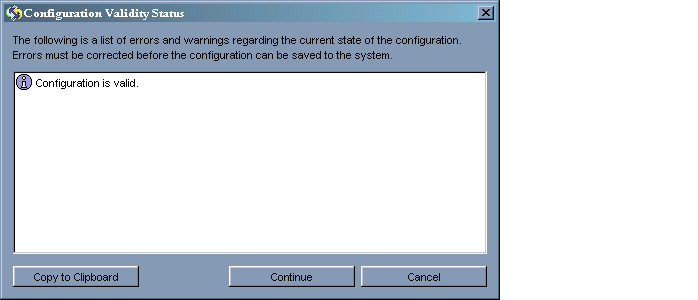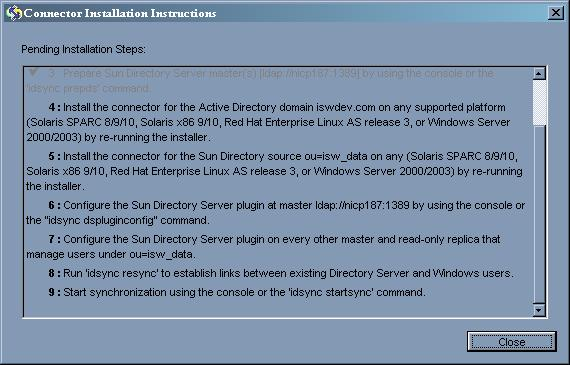| Skip Navigation Links | |
| Exit Print View | |

|
Oracle Identity Synchronization for Windows 6.0 Installation and Configuration Guide |
| Skip Navigation Links | |
| Exit Print View | |

|
Oracle Identity Synchronization for Windows 6.0 Installation and Configuration Guide |
Part I Installing Identity Synchronization for Windows
Opening the Identity Synchronization for Windows Console
To Open Identity Synchronization for Windows Console
Creating a Sun Java System Directory Source
To Create a New Sun Java System Directory Source
Preparing Sun Directory Source
To Prepare your Directory Server Source
Creating an Active Directory Source
To Configure and Create Windows Active Directory Servers in a Network
Creating a Windows NT SAM Directory Source
To Deploy Identity Synchronization for Windows on Windows NT
Selecting and Mapping User Attributes
Selecting and Mapping Attributes
To Select and Map Attributes for Synchronization
Creating Parameterized Default Attribute Values
To Change the Default Schema Source
Propagating User Attributes Between Systems
Specifying How Object Creations Flow
To Specify How Object Creations Should Flow Between Directory Server and Active Directory Systems
Specifying New Creation Attributes
Specifying How Object Modifications Flow
Configuring and Synchronizing Object Activations and Inactivations
Specifying Configuration Settings for Group Synchronization
Configuring and Synchronizing Account Lockout and Unlockout
Prerequisites for Account Lockout
Using the Account Lockout Feature
To Specify how Deleted Entries Flow Between Directory Server and Active Directory Systems
Creating Synchronization User Lists
To Identify and Link User Types Between Servers
6. Synchronizing Existing Users and User Groups
9. Understanding Audit and Error Files
Part II Identity Synchronization for Windows Appendixes
A. Using the Identity Synchronization for Windows Command Line Utilities
B. Identity Synchronization for Windows LinkUsers XML Document Sample
C. Running Identity Synchronization for Windows Services as Non-Root on Solaris
D. Defining and Configuring Synchronization User Lists for Identity Synchronization for Windows
E. Identity Synchronization for Windows Installation Notes for Replicated Environments
Figure 4-55 Configuration Validity Status Window

This panel confirms that your configuration is valid or identifies configuration problems that must be fixed.
Saving your configuration may take a few minutes because the program rewrites the information out to the configuration directory and notifies the system manager.
The system manager (a Core component) is responsible for distributing your configuration settings out to the components that need the information.
A Connector Installation Instructions dialog box is displayed, giving instructions about how to proceed with installing the Identity Synchronization for Windows Connectors and subcomponents.
This list has now been updated with a To Do list that is customized for your deployment. (Up to this point, the steps were generic.) Note that you can also access and update the To Do list from the Status tab on the Identity Synchronization for Windows Console.
Figure 4-56 Instructions for Installing the Connectors

After finishing the initial Core configuration, you are ready to install the Identity Synchronization for Windows Connectors and subcomponents. Continue to Chapter 1, Understanding the Product for instructions.